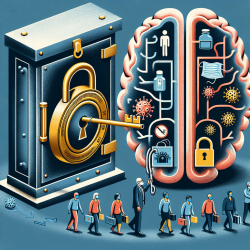In a groundbreaking study titled Transcriptome Analysis Reveals Altered Inflammatory Pathway in an Inducible Glial Cell Model of Myotonic Dystrophy Type 1, researchers have uncovered significant insights into the cellular and molecular events affected in glial cells due to Myotonic Dystrophy Type 1 (DM1). This research provides a deeper understanding of the disease mechanism and opens new avenues for therapeutic interventions.
The Role of Glial Cells in DM1
DM1 is a multisystemic condition with debilitating effects on the central nervous system (CNS). While previous studies have highlighted defective neuron-glia communication as a contributor to DM1 brain pathology, specific cellular and molecular events in glial cells remained largely unexplored until now.
The study utilized an inducible DM1 model derived from MIO-M1 cell lines expressing 648 CUG repeats. This model successfully recreated the molecular hallmarks of DM1, including RNA foci accumulation and dysregulation of alternative splicing. Through transcriptome analysis, researchers identified several gene changes associated with the DM1 mutation in MIO-M1 cells, including immune mediators and microRNAs as potential regulators.
Key Findings: Inflammation and Immune Response
A gene ontology enrichment analysis revealed that inflammation and immune response are major deregulated processes in MIO-M1 DM1 cells. The study identified altered expression levels of genes involved in these processes, such as CXCL10, CCL5, CXCL8, TNFAIP3, and TNFRSF9. These findings indicate an altered immune response in glial cells, suggesting their potential contribution to CNS symptoms in DM1.
The involvement of inflammatory pathways opens new windows for studying glia's role in DM1 pathophysiology. Understanding these pathways could lead to novel therapeutic strategies targeting neuroinflammation and improving patient outcomes.
Implications for Practitioners
This research highlights the importance of considering glial cells' role in DM1 when developing therapeutic strategies. Practitioners are encouraged to explore these findings further and consider incorporating them into their clinical approaches. By understanding the molecular mechanisms at play, practitioners can better tailor treatments to address the specific needs of DM1 patients.
The study also underscores the need for continued research into the complex interactions between neurons and glia. By delving deeper into these relationships, researchers can uncover additional therapeutic targets and improve our understanding of DM1's impact on the CNS.
To read the original research paper, please follow this link: Transcriptome Analysis Reveals Altered Inflammatory Pathway in an Inducible Glial Cell Model of Myotonic Dystrophy Type 1










